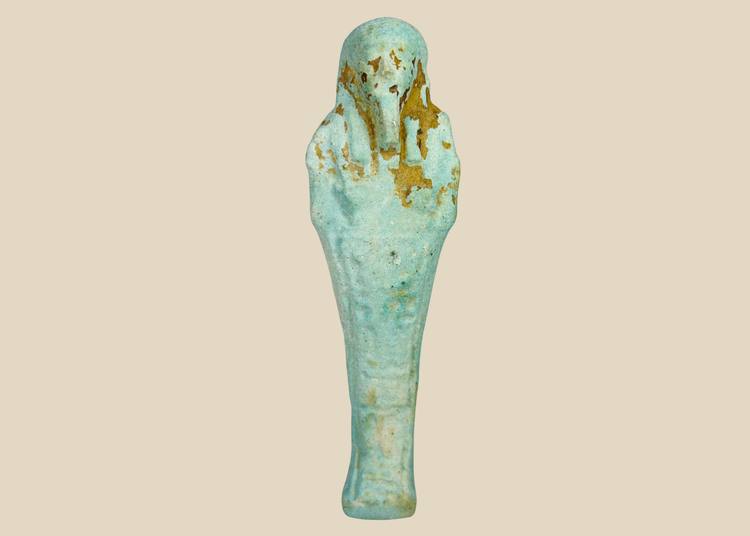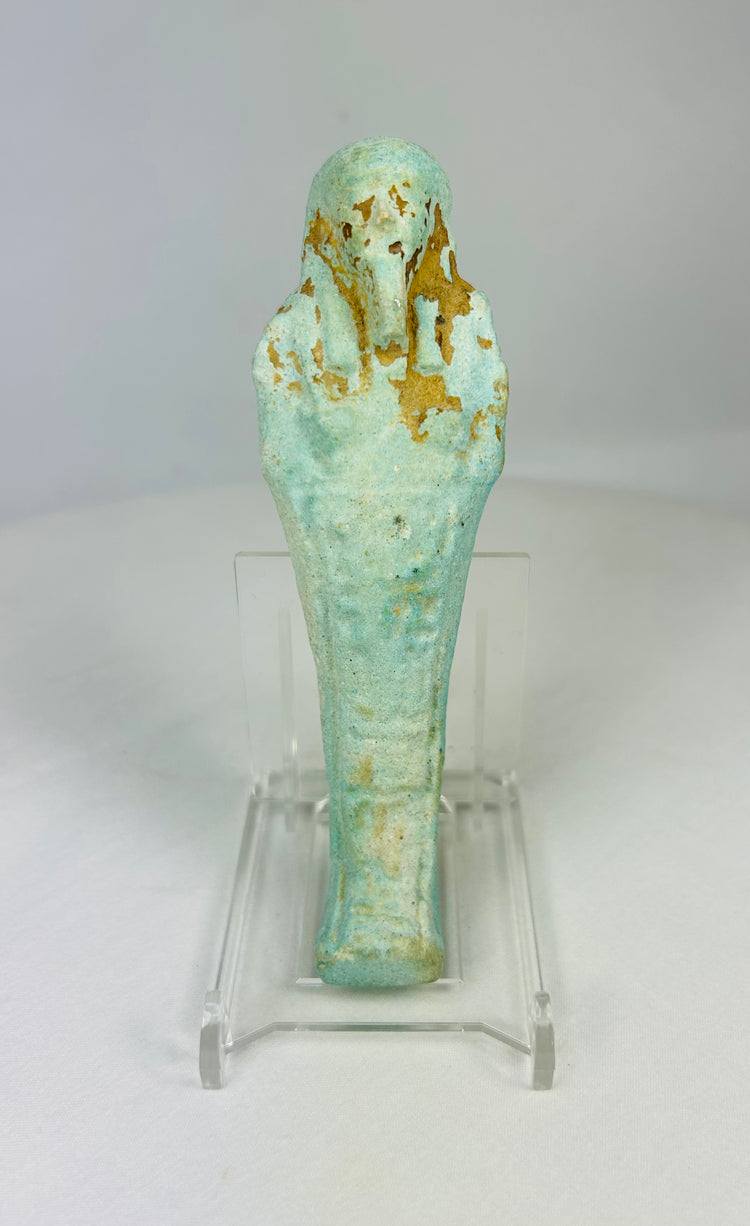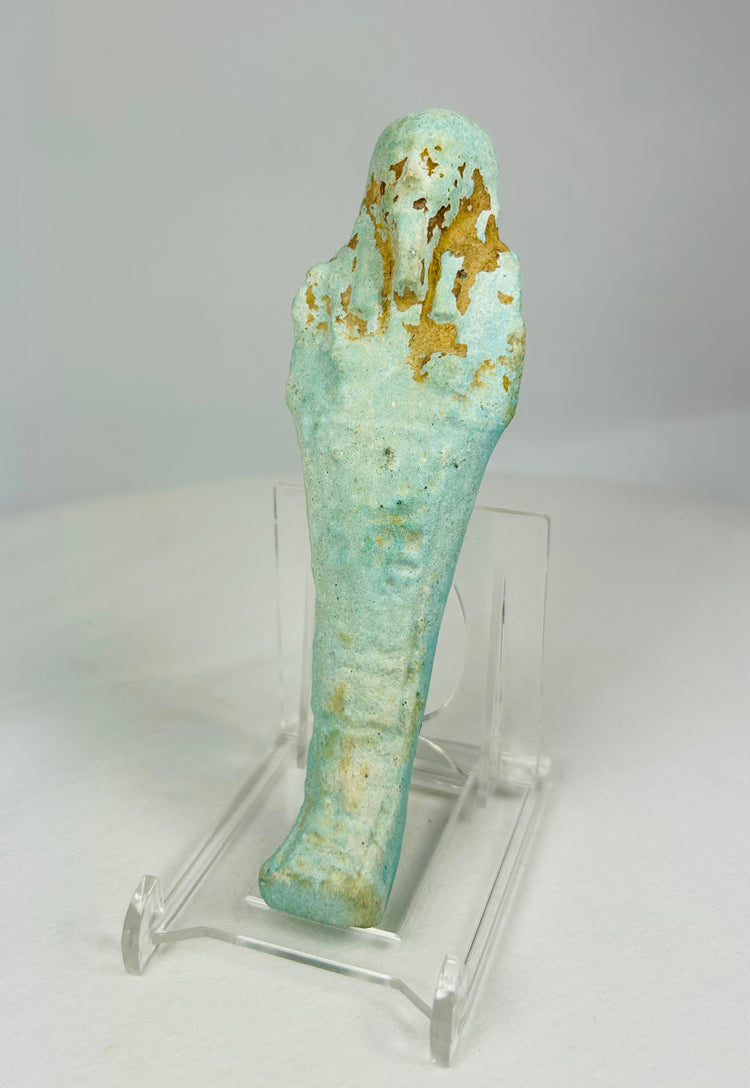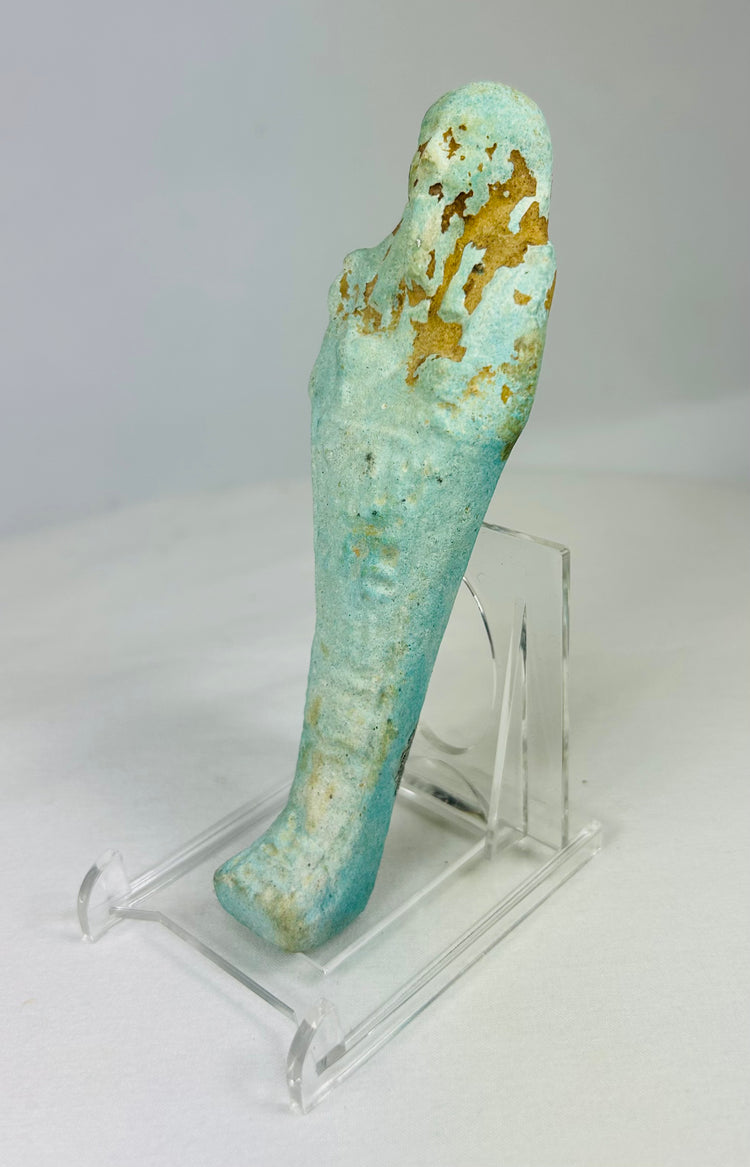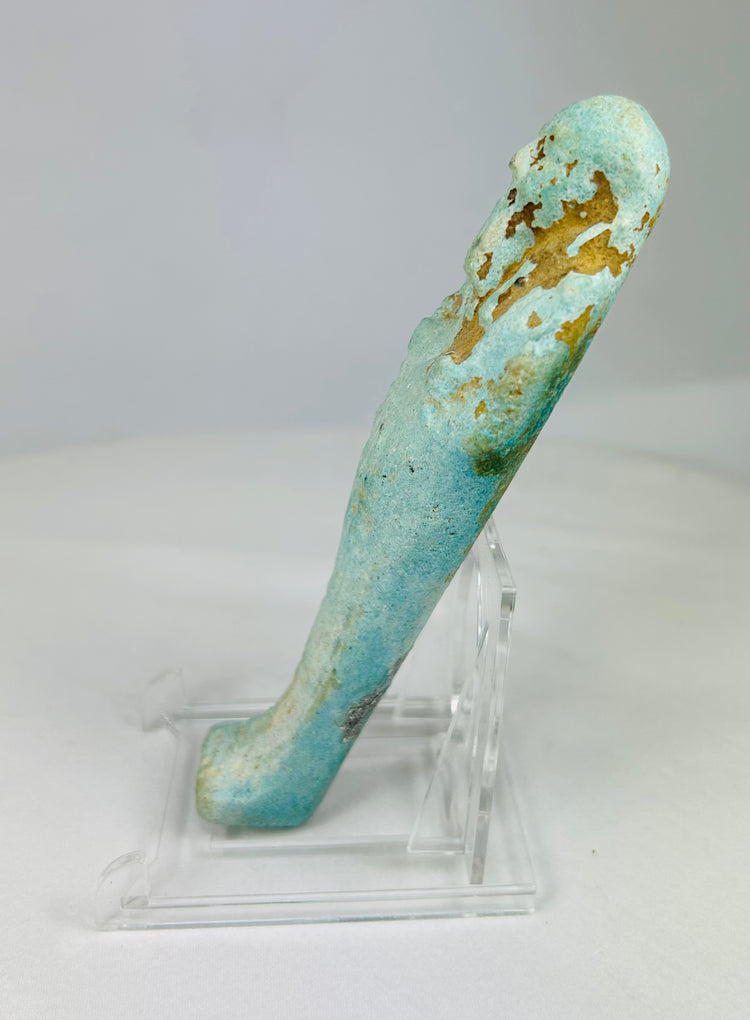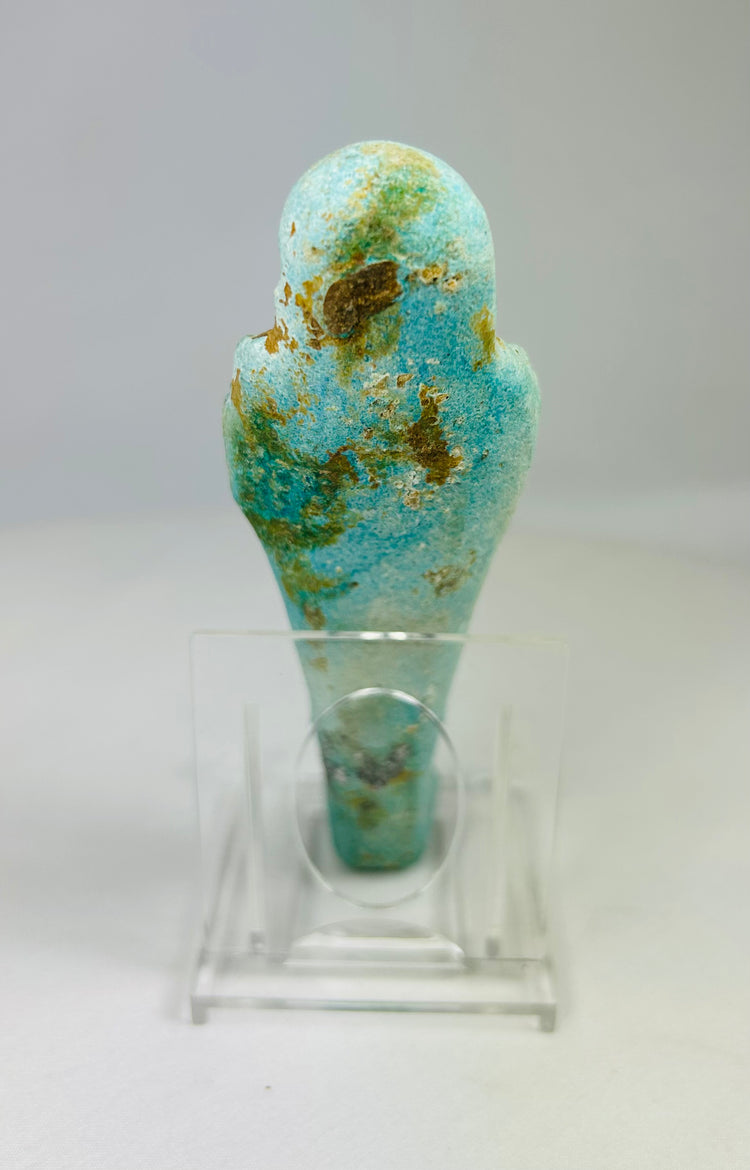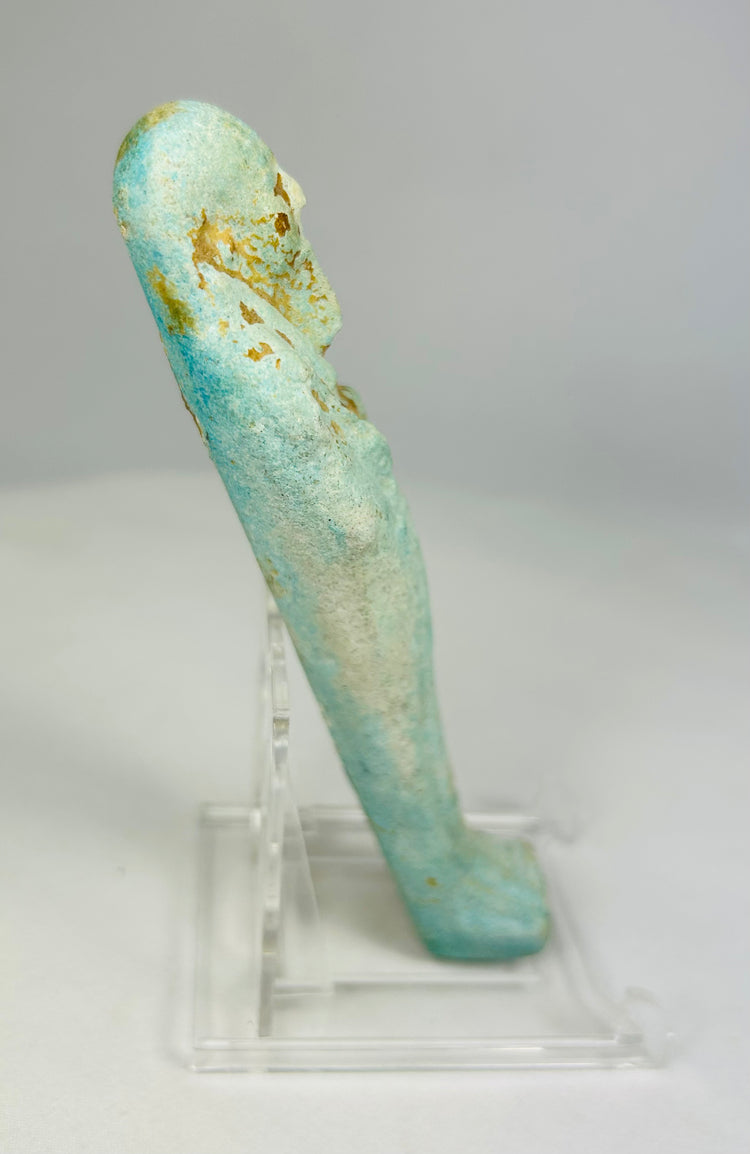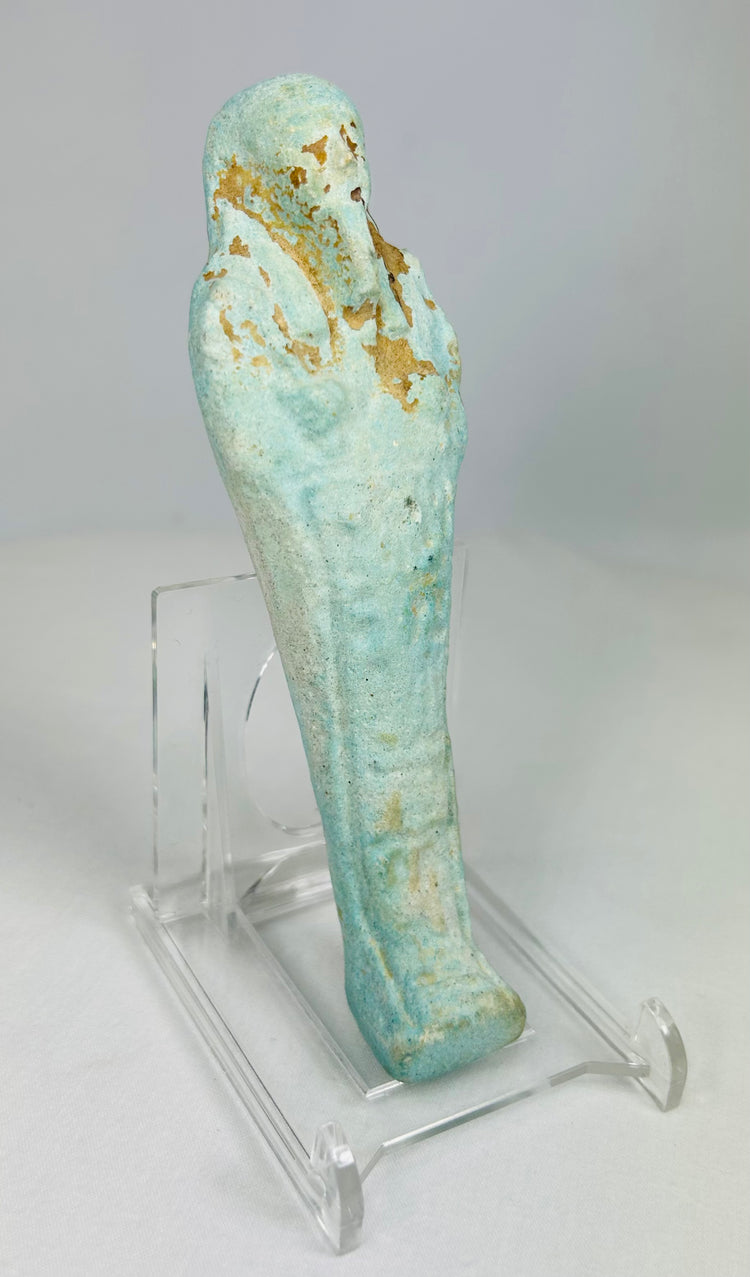Ancient Egyptian Faience Ushabti | Turquoise Blue Glaze | Circa 700–300 BCE
Description
Plus
Moins
Historical Context & Origin
Region: Egypt
Material: Faience with turquoise-blue glaze and mineral deposits
Period: Late Dynastic to Ptolemaic Period, circa 700–300 BCE
Description
An authentic Egyptian ushabti figure crafted in blue-green faience, still showing traces of its original glossy glaze and earthen burial deposits. The piece depicts a traditional mummiform servant figure with arms folded across the chest, evoking the image of Osiris, god of the afterlife. Despite surface loss and encrustation from centuries of interment, the faience retains its remarkable hue and ancient character—an evocative relic of Egyptian funerary devotion.
Features
- Hand-molded faience construction with turquoise and green glaze remnants
- Classic mummiform posture symbolizing service to the gods
- Distinct mineral accretions verifying ancient burial and authenticit
Cultural Significance
Ushabtis (or shabtis) were funerary figures intended to serve their owners in the afterlife, answering divine calls to labor on their behalf. Crafted from faience—a quartz-based material symbolizing light and regeneration—these figures embodied the Egyptian belief in eternal life and spiritual rebirth. Their turquoise hue evoked the color of the Nile and the life-giving power of the sun.
Condition
Well-preserved with typical wear, glaze loss, and earthen mineralization consistent with age and burial context.
Dimensions
Height: 5 in
Width: 1.75 in
Depth: 1 in
Age
Circa 700–300 BCE
Learn More
For a deeper understanding of ancient Egyptian funerary art and the historical development of ushabti figures, explore these museum and academic resources:
Description
Historical Context & Origin
Region: Egypt
Material: Faience with turquoise-blue glaze and mineral deposits
Period: Late Dynastic to Ptolemaic Period, circa 700–300 BCE
Description
An authentic Egyptian ushabti figure crafted in blue-green faience, still showing traces of its original glossy glaze and earthen burial deposits. The piece depicts a traditional mummiform servant figure with arms folded across the chest, evoking the image of Osiris, god of the afterlife. Despite surface loss and encrustation from centuries of interment, the faience retains its remarkable hue and ancient character—an evocative relic of Egyptian funerary devotion.
Features
- Hand-molded faience construction with turquoise and green glaze remnants
- Classic mummiform posture symbolizing service to the gods
- Distinct mineral accretions verifying ancient burial and authenticit
Cultural Significance
Ushabtis (or shabtis) were funerary figures intended to serve their owners in the afterlife, answering divine calls to labor on their behalf. Crafted from faience—a quartz-based material symbolizing light and regeneration—these figures embodied the Egyptian belief in eternal life and spiritual rebirth. Their turquoise hue evoked the color of the Nile and the life-giving power of the sun.
Condition
Well-preserved with typical wear, glaze loss, and earthen mineralization consistent with age and burial context.
Dimensions
Height: 5 in
Width: 1.75 in
Depth: 1 in
Age
Circa 700–300 BCE
Learn More
For a deeper understanding of ancient Egyptian funerary art and the historical development of ushabti figures, explore these museum and academic resources:
Vous aimerez peut-être aussi






















